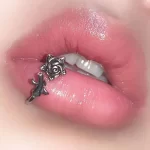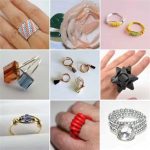One of the most frequently asked questions among body modification enthusiasts is: Can a vertical labret damage teeth? This piercing, also known as a “snake bites” variation or midline lower lip piercing, involves placing jewelry that runs vertically through the center of the lower lip. While it offers a bold and stylish look, concerns about dental health are valid and deserve careful attention. The short answer is yes—can a vertical labret damage teeth—especially if proper care, jewelry choice, and oral habits are overlooked.
Moreover, because the jewelry sits close to the inner surface of the lower front teeth, constant contact can lead to enamel wear, chipping, or even gum recession over time. Unlike traditional horizontal labrets, which exit below the lip, the vertical orientation increases the chance of metal or acrylic touching tooth surfaces with every movement. Therefore, understanding how this happens and what you can do to prevent harm is essential for anyone considering or already wearing this type of piercing.
Also, individual anatomy affects outcomes. Some people naturally have more space between their lip and teeth. Others may have an overbite or jaw alignment that brings the jewelry into direct contact during speech or rest. Hence, personal assessment by both a piercer and dentist improves safety.
Ultimately, awareness is the first step toward prevention. If you’re asking yourself “can a vertical labret damage teeth,” you’re already thinking critically about your body art. This article explores the mechanics behind potential damage, identifies warning signs, and provides practical solutions so you can make informed decisions.
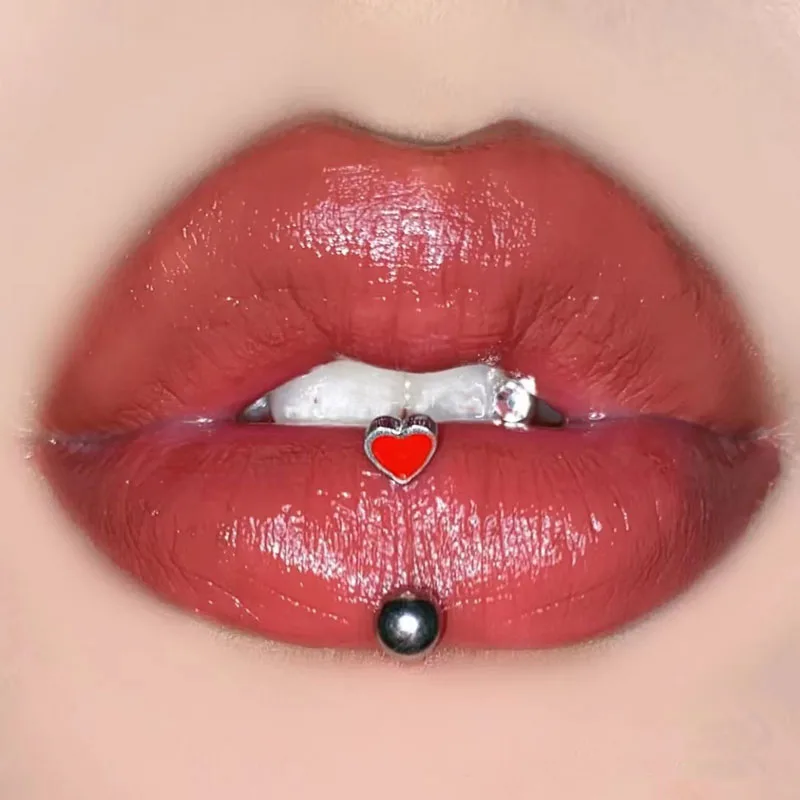 How Vertical Labret Jewelry Interacts With Teeth and Gums
How Vertical Labret Jewelry Interacts With Teeth and Gums
The way a vertical labret sits in the mouth directly influences its potential to cause dental problems. Unlike other facial piercings, this style passes through the center of the lower lip from top to bottom, creating a unique interaction with surrounding structures.
First, the entry point is just above the frenulum—the tissue connecting the lip to the gum line. The exit is typically at the peak of the lip roll. Jewelry extends inward, often ending near or against the back of the lower front teeth. As a result, any movement of the lip brings the hardware into proximity with sensitive areas.
Second, the most common jewelry used is a straight barbell or curved barbell. These have metal balls or flat-back discs on each end. When worn, the internal disc presses slightly against the inside of the lip. Over time, if too tight or improperly shaped, it may rub against the gum tissue just above the teeth.
Third, speaking, eating, and unconscious habits like chewing the jewelry increase contact frequency. Every time you talk or move your mouth, the barbell shifts slightly. Repetitive motion acts like sandpaper on enamel. Consequently, microscopic scratches build up into visible wear.
Fourth, tongue pressure can push the jewelry outward. This forces the back disc into firmer contact with teeth. Some wearers develop a habit of pressing their tongue against the bar, unknowingly accelerating damage.
Hence, the mechanical relationship between the piercing and oral anatomy explains why can a vertical labret damage teeth isn’t just hypothetical—it’s a real concern for many wearers.
Common Dental Issues Linked to Vertical Labret Piercings
Ignoring the risks associated with a vertical labret can lead to several preventable but serious dental complications. These issues often develop slowly, making early detection crucial.
First, enamel erosion is one of the most frequent problems. Tooth enamel does not regenerate. Once worn down by constant rubbing, it exposes the softer dentin underneath. This leads to increased sensitivity to hot, cold, and sweet foods.
Second, chipped or cracked teeth occur when hard metal strikes the edge of a tooth. This is especially likely during sudden movements like yawning or laughing. Minor chips may go unnoticed at first. However, they weaken the tooth structure over time.
Third, gum recession happens when the back disc irritates the gingival tissue. Persistent pressure causes the gum line to pull away from the tooth. Exposed roots become painful and prone to decay. Also, aesthetic changes may appear as teeth look longer.
Fourth, plaque buildup increases around the piercing site. Jewelry traps food particles and bacteria. If not cleaned properly, this leads to localized gingivitis or periodontal disease. Swelling and bleeding gums are early warning signs.
Fifth, tooth mobility can develop in severe cases. Chronic pressure destabilizes the ligaments holding teeth in place. Though rare, some patients report loose lower incisors after years of piercing wear.
Sixth, malocclusion or bite changes may arise indirectly. Pain or discomfort from the piercing alters how someone closes their mouth. Over time, this can shift jaw positioning and affect chewing patterns.
Seventh, nerve irritation is possible if swelling or infection spreads deep into the tissue. While uncommon, persistent numbness or tingling should be evaluated immediately.
Therefore, regular dental checkups are essential. Dentists can spot early signs before irreversible damage occurs. Catching issues early allows for adjustments in jewelry or removal before serious harm sets in.
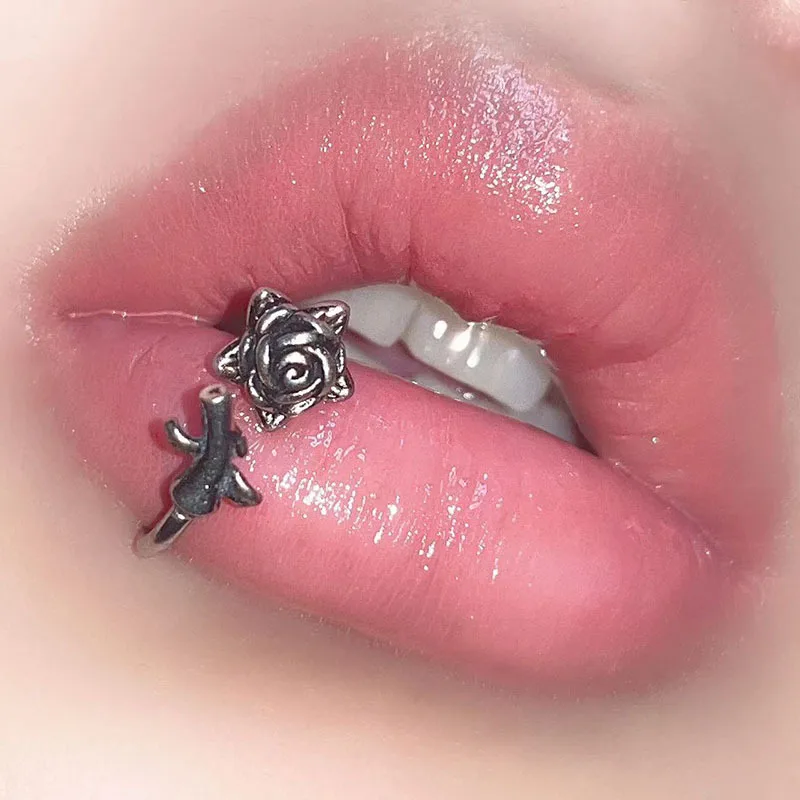 Choosing Safer Jewelry to Reduce Dental Risk
Choosing Safer Jewelry to Reduce Dental Risk
One of the best ways to minimize harm is selecting appropriate jewelry. Not all materials and styles carry equal risk. Making smart choices upfront reduces long-term consequences.
First, opt for implant-grade titanium (ASTM F136). It’s biocompatible, lightweight, and highly polished. Its smooth finish creates minimal friction against enamel and gums.
Second, consider flat-back discs instead of ball ends. Traditional balls protrude and are more likely to tap teeth. Flat-backs lie flush against the inner lip, reducing contact. They also distribute pressure evenly.
Third, choose shorter bars once healed. Initial jewelry is longer to allow for swelling. After healing, downsizing prevents excessive movement. Less wiggle means less accidental hitting.
Fourth, avoid acrylic or plastic ends. While cheaper, these materials are porous and can harbor bacteria. They also degrade faster, creating jagged edges that scratch teeth.
Fifth, select internally threaded jewelry. Externally threaded posts have sharp screw threads that can scrape soft tissues. Internal threading keeps the piercing end smooth.
Sixth, use bio-compatible plastics like PTFE (polytetrafluoroethylene) for temporary wear. These are softer than metal and ideal for sleep or high-risk situations. Some wearers switch to PTFE at night.
Seventh, consult your piercer about custom lengths. Off-the-shelf sizes may not fit perfectly. Custom-fitted bars ensure optimal comfort and safety.
Thus, investing in high-quality, well-designed jewelry pays off in oral health. It doesn’t eliminate risk entirely—but it significantly lowers it.
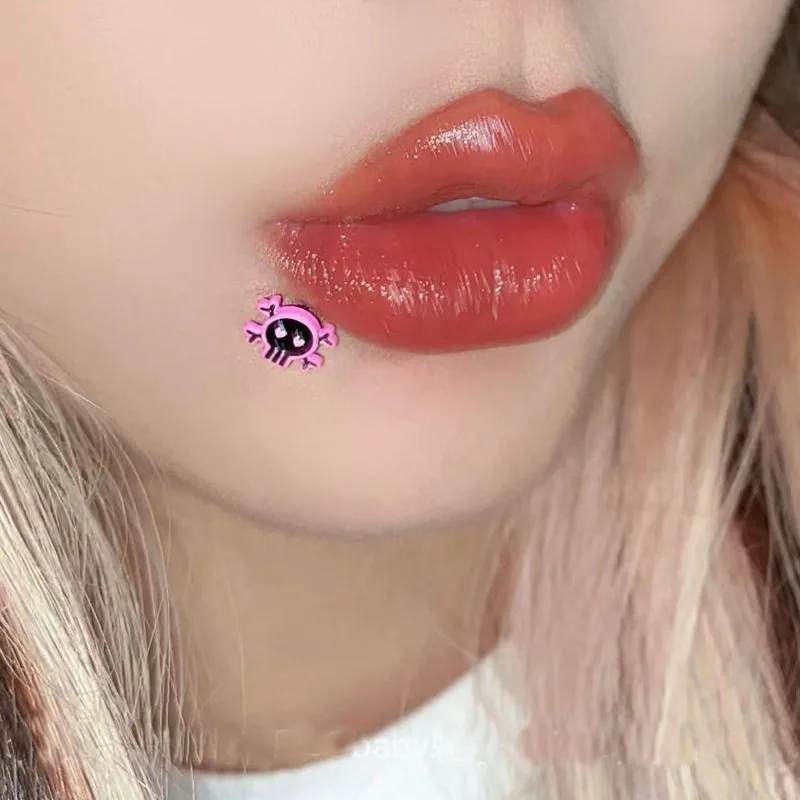 Healing and Long-Term Care for Vertical Labret Piercings
Healing and Long-Term Care for Vertical Labret Piercings
Proper aftercare is vital not only for healing but also for preventing future dental complications. The initial weeks set the foundation for how the piercing behaves long-term.
First, follow a strict cleaning routine. Rinse with saline solution twice daily. Avoid alcohol-based mouthwashes—they delay healing and dry out tissue. Instead, use non-alcoholic oral rinses approved for piercings.
Second, refrain from touching the jewelry with dirty hands. Bacteria transfer increases infection risk. Also, avoid twisting or playing with the barbell. Unnecessary movement irritates the channel.
Third, maintain excellent oral hygiene. Brush gently twice a day. Use a soft-bristled toothbrush to avoid aggravating the piercing. Floss daily to prevent plaque buildup near the lower front teeth.
Fourth, avoid smoking and drinking through straws. Suction creates negative pressure that swells the piercing and pulls bacteria into the wound. Both habits prolong healing.
Fifth, eat soft foods initially. Crunchy or spicy items can injure the fresh piercing. Soups, yogurt, and mashed potatoes reduce irritation during recovery.
Sixth, attend follow-up appointments with your piercer. They assess healing progress and may suggest downsizing the barbell. Early adjustment prevents embedding and migration.
Seventh, monitor for signs of trouble. Excessive redness, pus, pain, or swelling beyond two weeks warrants professional evaluation. Delayed treatment can lead to abscesses or scarring.
By prioritizing care during healing, you establish healthy tissue that supports safe long-term wear.
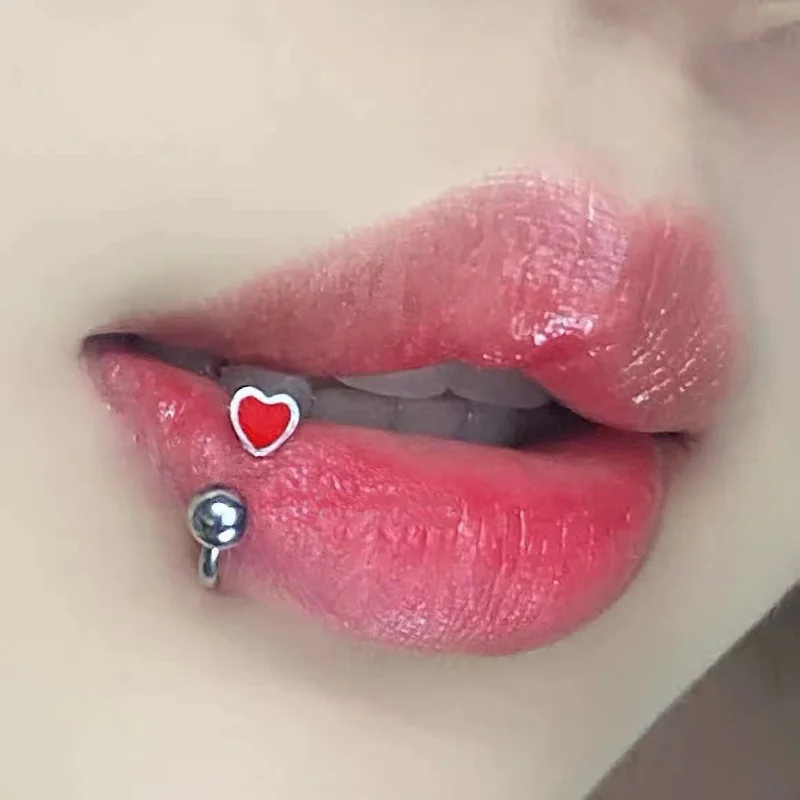 Frequently Asked Questions About Vertical Labret and Teeth
Frequently Asked Questions About Vertical Labret and Teeth
Many people share similar concerns when considering a vertical labret. Addressing them helps clarify misconceptions and promote safer practices.
Can I remove the jewelry to protect my teeth?
Yes. Taking it out periodically gives your mouth a break. Many wearers remove it at night or during meals to reduce contact.
Will my teeth heal if damage has started?
Enamel cannot regrow. However, early-stage erosion can be managed with fluoride treatments and bonding. Severe cases may require crowns or veneers.
Is there a safe alternative to a vertical labret?
Yes. A standard horizontal labret places jewelry farther from teeth. Dermals or microdermals offer surface options with less internal extension.
How often should I see a dentist?
Every six months. Inform them about your piercing so they can examine for wear patterns.
Can I wear retainers or aligners with this piercing?
Possibly. You may need to pause wear during healing. Later, modifications or temporary removal might be necessary.
Does everyone experience dental damage?
No. Some people adapt well with proper jewelry and habits. Risk varies based on anatomy and behavior.
Can a dentist fix damage caused by piercings?
Yes. Treatments include fillings, crowns, gum grafts, and sensitivity management. Prevention remains the best strategy.
Signs That Your Piercing Is Causing Damage
Early detection is key to avoiding irreversible harm. Knowing what to watch for helps you take action before problems escalate.
First, notice sensitivity in lower front teeth. If cold water or ice cream causes sharp pain, enamel may be thinning.
Second, check for visible lines or grooves on the back of teeth. Run your tongue along the surface. Rough spots indicate wear.
Third, look for chipped enamel. Small flakes or dents near the gum line are red flags.
Fourth, observe gum recession. If roots appear exposed or gums bleed easily, irritation from jewelry is likely.
Fifth, feel for sharp edges on the jewelry itself. Worn-down balls or cracked acrylic can scratch tissue.
Sixth, pay attention to persistent soreness in the lip or jaw. Chronic pressure leads to inflammation.
Seventh, ask your dentist to measure enamel thickness during cleanings. Digital tools detect thinning before it’s visible.
Acting on these signals can save your smile. Consider changing jewelry or removing the piercing altogether if damage progresses.
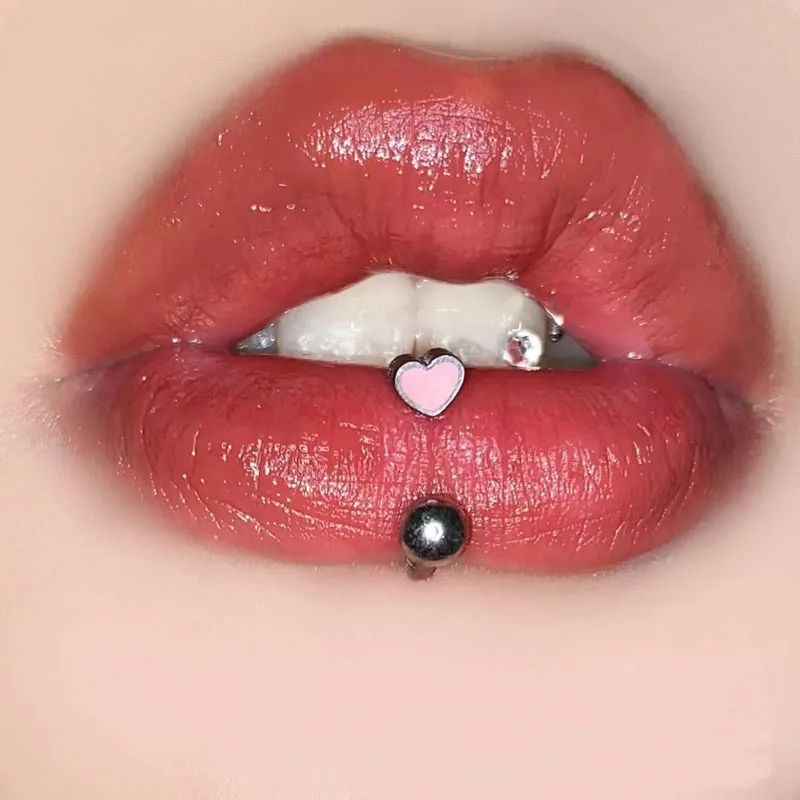 Final Thoughts: Can a Vertical Labret Damage Teeth?
Final Thoughts: Can a Vertical Labret Damage Teeth?
To reiterate, yes—can a vertical labret damage teeth—and the evidence supporting this is both clinical and anecdotal. While the piercing offers a striking aesthetic, it comes with responsibilities. Without proper jewelry selection, maintenance, and awareness, wearers risk long-term dental consequences.
However, this doesn’t mean you must avoid the style entirely. With informed choices, such as using flat-back titanium discs, practicing excellent oral hygiene, and scheduling regular dental visits, many people enjoy their vertical labret safely for years.
Ultimately, body art should enhance self-expression without compromising health. By asking “can a vertical labret damage teeth,” you’ve taken the first step toward responsible ownership. Now, apply that awareness daily. Listen to your body. Respect your smile. And make decisions that let you look good and stay healthy.
